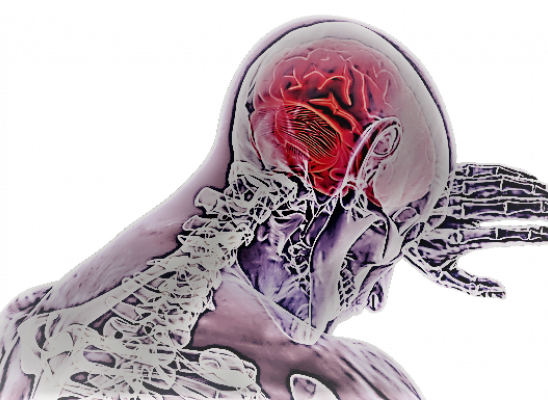Stimulus Control for Skin Picking

Online test
Find out the severity of your symptoms with this free online test
If you or a loved one struggles with skin picking, you’ve probably found that certain situations tend to trigger urges to pick. You may have even tried to avoid them. One of the keys to changing behavior is managing the things that trigger the behavior. In a recent SkinPick.com webinar, Dr. Vladimir Miletic talks about a very specific type of strategy known as stimulus control and how these techniques can be helpful in reducing skin picking.
What Is Stimulus Control?
Stimulus control (SC) is a strategy that turns attention to your external environment and the factors that can trigger skin picking. Stimulus control is a way of modifying your environment to reduce your exposure to the things that trigger your skin picking. When you are able to reduce or avoid the trigger, you can reduce the urge to pick.
If this strategy sounds familiar, it is not unlike some of the elements of Habit Reversal Training (HRT) which was discussed in a previous SkinPick webinar. Two of the elements of HRT are awareness training and competing responses. Essentially, you’re learning to recognize your behaviors and choosing a different response. The goal is not to elicit a feeling or eliminate the urges. Stimulus control is very similar. The goal is not profound psychological change or to stop the urges but to modify your environment in some way that does not activate the picking behavior. In fact, Dr. Miletic suggests that HRT and SC are compatible and can complement each other as part of a treatment plan.
Stimulus control can be anything you do to modify your environment in a way that reduces triggers or makes picking difficult or impossible. There are two types of stimulus control strategies:
General Strategies – These are lifestyle changes that can reduce the urge to pick over time. Some of the more common and effective lifestyle strategies include:
- Maintaining a good skincare routine
- Good nutrition
- Managing stress
- Regular exercise
- Taking breaks from work or school
- Treating skin conditions as needed
- Spending time with friends
Specific Strategies – These strategies focus more directly on the picking behavior. Dr. Miletic notes that some of the least popular ones are also the more effective ones:
- Wearing gloves or band aids on your fingers
- Colloid patches
More popular but still effective:
- Replace TV or social media with engaging activities or hobbies
- Hold an object in your hand when you are in a triggering situation
- Limit or remove mirrors
- Limit mirror time
- Move makeup to a less private area
- Call a friend or other trusted person
- Work in a shared space
- Reduce alone time
- Remove your “tools” used to pick
- Keep your hands busy
These are a few of the many ways you can modify your environment. They are not a “one-size-fits-all” nor are they meant to eliminate urges. They are meant to reduce the trigger or make picking difficult or impossible.
What About the Urges?
Urges, while intense, are fleeting feelings that arise as the result of an experience you’re having. They’re a complex interaction of thoughts, feelings, and where you are and what’s happening in that moment.
Dr. Miletic views urges as simply feelings, neither good nor bad. Instead of wanting to make it go away, he suggests dealing with them in a constructive way. Viewed through the lens of constructivism, urges are simply information. It comes from your interaction with your world and provides you with information about that interaction. You can then decide if you want it to continue sending those messages or do something to change the interaction. We tend to interpret urges as commands, but they are in fact, just information. Stimulus control, like HRT, won’t stop the urges but it can help you be more aware of what it means and why you experience it.
Choosing Strategies
When choosing strategies to try, it is important to first get to know your skin picking triggers and behaviors. Self-monitoring can be really helpful here. Dr. Miletic recommends using the SkinPick app to help with this monitoring.
- Where do you tend to engage in skin picking?
- What are your immediate triggers? Are they internal or external? SC tends to work best for managing external triggers.
- What type of skin picking do you tend to engage in most? Automatic or focused? SC tends to be more effective for automatic-type skin picking rather than the focused-type of picking.
Once you understand your skin picking, you can begin to choose some strategies. Dr. Miletic offers some tips for choosing your strategies:
- Fight the urge to resist. Implementing something new is uncomfortable and resistance is tempting. Remember, it’s more about whether something works for you, not if it’s comfortable.
- In the beginning, everything new feels uncomfortable and requires adjustment. Give yourself time to adjust to a new way of doing something.
- More is not better. Nothing will work 100% of the time but trying to use all the strategies at once to cover every possibility is not effective either.
- Implement one strategy at a time. You want to experience it and see if it is helpful. That’s hard to do when you’re trying to use multiple strategies.
- Be specific about what you want to achieve with the strategy. What’s the goal?
- Be specific about your intentions and expectations
- Continue to self-monitor and keep a record of how you’re doing.
Remember, the goal is not to eliminate urges or skin picking. That is a process that is very hard to do with stimulus control alone. SC addresses the behavior of skin picking but not the underlying causes which also need to be addressed.
Stimulus control is most effective when it is part of treatment and not the only treatment. It integrates well with other treatments used for skin picking disorder such as HRT. When combined, HRT and SC provide an effective approach that addresses both the necessary environmental changes (SC) and practical techniques that you can apply when needed (HRT).
To learn more, visit the SkinPick.com YouTube channel. You can also subscribe to the SkinPick.com newsletter and YouTube channel to receive notifications about the next webinar.
Online test
Find out the severity of your symptoms with this free online test
Start your journey with SkinPick
Take control of your life and find freedom from skin picking through professional therapy and evidence-based behavioral techniques.
Start Now



